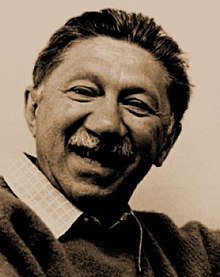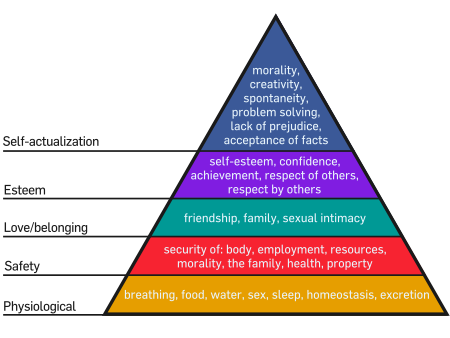The question is: What are Maslow's Hierarchy of needs?
Maslow was one of the early humanistic psychologists and he rejected the dominant theories of psychoanalysis and behaviorism (branches in psychology) because he was looking for a more positive view of human behavior. He proposed that there are several levels of needs that a person tries to meet before they can achieve the highest level of personality fulfillment, which is self-actualization, the point where people have satisfied lower needs and "achieved their full human potential." These needs vary and range from fundamental deficiency needs (such as food/water) to growth needs (such as the desire to have friends). In order for people to achieve the highest level (self actualization), the other fundamental levels must be accomplished first.

The lowest level consists of physiological needs such as food, water, and rest. Once those needs are met, safety and its associates are the next level. The level above safety consists of belongingness and love needs. Above that are esteem needs; feelings that involve feeling accomplished or earning the esteem of others. Above esteem needs are cognitive needs. This consists of learning only for the sake of gathering knowledge and the natural curiosity that all people (to some extent) have. Above those needs are the aesthetic needs, which include the need for order and beauty, so basically the artistic aspect of people. Above those are the self-actualization needs which are considered the highest for self accomplishment. And once all of those needs are met, and someone has accomplished as much as possible for themselves, the transcendence needs come in. These consist of helping other people reach self-actualization.
When it comes to the levels of needs, according to Maslow, people can move up and down all the time. Also, peak experiences are defined as moments in which self-actualization is reached, even if it is only temporarily.
Here is a more visual demonstration of the hierarchy:

No comments:
Post a Comment